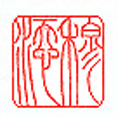— go back to list of extracts
— skip to next extract

Syracuse was a joy to see. This was my first visit. When our vessel docked, we were well-greeted by our host, Simonides. My student Philodemus and I had come several days in advance of my other students to plan the details of our stay and studies there, in consultation with Simonides. Despite the warmth of his welcome, I saw that Simonides was under strain, though his lineaments suggested habitual good cheer and merriment.
His home was a palace, though it spoke of ease and comfort rather than pomp and extravagance. But when Simonides had seated us, and refreshments had been provided, he put his hand on my forearm, and said: ‘Dear Crito,’ he hesitated, ‘I am so happy about your visit ...’ He nodded with a gesture towards Philodemus, to include him. ‘But ... but I am in anguish,’ he said., and his face showed his anguish more clearly than before ‘My lord,’ I said, ‘what is the cause of your pain?’ ‘My son,’ he said, ‘my son ...’
We waited in silence. ‘My son,’ he said, ‘was kidnapped six days ago.’ He wiped his eyes, and stood. ‘Let me show you his likeness.’
He goes over to a curtain, and draws it aside. On a daïs stands a life-size sculpture. Its is a boy, perhaps 12 or 13 years old. He seems to have been running. Did someone call? He has paused, and turned, his mouth slightly open, and his eyebrows raised a little, the movement of his long curly hair suggesting that he has only just come to a halt. His face suggests innocence and mischief. He is unclothed.
(1/3)